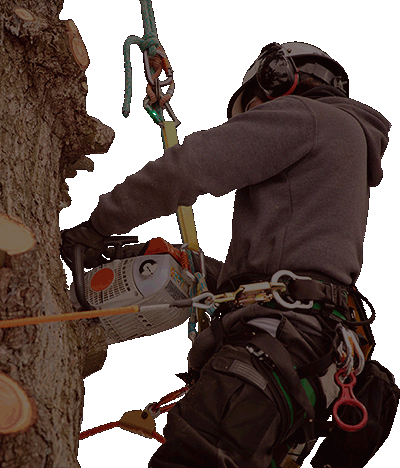
Trees and pests just don’t get along. Simple as that, right? Well, when it comes to ants lurking around our trees’ roots and stems, things aren’t so clear-cut.
Some ants don’t pose a problem at all–and get this, some can even help us take better care of our trees.
So how can you tell the difference? Read on to learn everything you need to know about these creeping critters and your tree’s health.
Are ants on Spartanburg trees good or bad?
Ants are drawn to Spartanburg trees for two reasons. They’re searching for sweet honeydew left behind by other insects, or they’re making themselves at home inside Spartanburg trees with cavities and rotten wood.
Generally, ants themselves don’t damage a tree. Instead, they provide a warning sign that our Spartanburg tree is in trouble, which can help us act fast to treat it.
Do any ants around Spartanburg tree roots do harm?
With every rule, there are exceptions! Here are two ants that can be a problem for your tree.
- Red imported fire ants: They’re harsh on young Spartanburg trees and inflict people and pets with awful blisters.
If you see dome-shaped mounds at the base of your tree, be super careful not to touch or disturb those ant hills. The small, dark marron ants will sting whatever disrupts their home. Then, contact your arborist about an insecticide right away. - Carpenter ants: Piles of sawdust at the base of your Spartanburg tree mean these black ants are active. In this case, you should call your arborist to determine if the Spartanburg tree needs to be removed. Remember, ants only burrow in rotten Spartanburg tree wood, so a plant with carpenter ants is weak and could be risk of falling.
How to get rid of ants on trees
Even though most ants don’t threaten trees, they can be opportunistic and end up in your home or other parts of your landscape. Here are a few ways to stop that from happening:
- Spray the Spartanburg tree with a solution that contains 30 drops of peppermint oil and one gallon of water. Ants hate peppermint, so they’ll leave the Spartanburg tree once they catch wind of the scent.
- Line the bottom of the Spartanburg tree with ant baits to capture them as they travel.
- Use a horticultural soap or insecticide to rid the Spartanburg tree of sap-feeding insects. In turn, you’ll cut off the ant’s honeydew supply.






